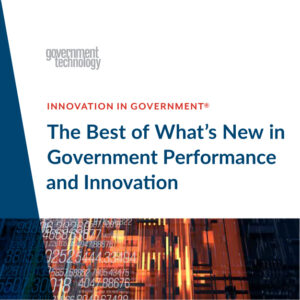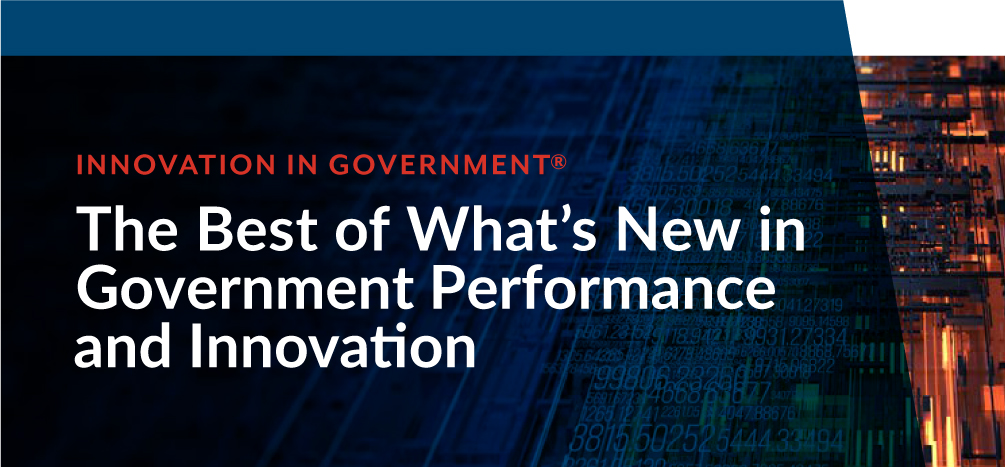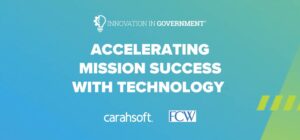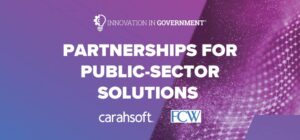The COVID-19 crisis underscores the growing importance of data analytics to state and local governments as they tackle complex challenges. It also shows how technological improvements are making data-driven insights easier to achieve and share. Although the COVID-19 response kicked public sector data analytics efforts into high gear, states and localities have been steadily working to become more data-driven over the past several years. Twenty-eight states now have a chief data officer (CDO), and similar positions are found throughout local government. The rise of the CDO is just one indication of the push among states and localities to use data to improve internal operations, strengthen citizen services, improve safety, and boost transparency and engagement. Learn the latest insights from industry thought leaders in government performance and innovation initiatives in Carahsoft’s Innovation in Government® report.
 Visibility and Automation Are Keys to Managing Complex Hybrid Environments
Visibility and Automation Are Keys to Managing Complex Hybrid Environments
“The rise in digital services requires states and localities to expand the amount of infrastructure and applications they operate. Citizens and employees expect immediate access to these services, so the pressure to handle things in a timely manner is high. Also, the IT environment has changed. Services and apps run in multiple locations — some of which you have no control over and are more exposed to the internet. New software-defined technologies require different considerations than a pure hardware-based approach, and you still have to support legacy technology and a lot of homegrown solutions. Another challenge is the astronomical amount of data coming from a growing number of disparate endpoints that you have to make sense of and protect from a privacy standpoint. So overall, there’s a lot more to consider regarding performance, usability, availability and security. You’ve got to support it all. And of course, you need the appropriate talent to do so.”
Read more insights from SolarWinds’ Vice President of Product, Brandon Shopp.
Enterprise Data Clouds Help Governments Get Smarter and More Predictive
“There’s a lot of great innovation in this space, with many states and municipalities pushing the envelope. The majority of adoption is around providing personalized services. Government agencies understand their constituents have an expectation of realtime connectivity and, therefore, demand a high level of service. To that end, many state and local governments are actively working to use technologies and approaches that let them effectively implement the data-driven services, policies, taxes and regulations that their customers are looking for. They’re using enterprise data platforms to break out of data silos that have been a barrier to smart government projects, and they’re implementing solutions that give them flexibility while maintaining the security necessary for sensitive data. We’re seeing great traction within smart transportation management, smart water management, smart energy management and data-driven policy initiatives.”
Read more insights from Cloudera’s Regional Vice President of Civilian and SLED, Joe Perrino.
Intelligent Data Management Prepares Agencies for a Data-Driven Future
“A plethora of data is being generated throughout the enterprise. Governments need to utilize that data strategically to improve internal efficiencies and citizen services, yet a lot of the data is siloed and organizations don’t even know they have it. We’re also seeing many governments move their data and workloads into the cloud. They’re seeking help to understand what data they have, what data and applications need to stay on premises and what can be moved, what processes need to be completely shut down and run in a software as-a-service (SaaS) environment, and so on. Then they need easy access and visibility into that data, wherever it lives. Fortunately, a lot of the processes around these trends can be automated to help organizations achieve their goals.”
Read more insights from Informatica’s Chief Federal Strategist, Mike Anderson.
Automation Enables Governments to Address Growing Digital Risk
“Digital transformation introduces new risks as organizations transition from legacy environments to new digital platforms and capabilities. For one thing, organizations often bring in third-party technologies and outside vendors as part of these transformation projects, so their risk footprint broadens. While the benefits of digital transformation may be great, agencies must understand, account for and mitigate the potential new risk factors being introduced into the enterprise. In addition, as governments deploy new technologies and capabilities that give citizens and employees easier and more pervasive access to information and services, they need to put in place stronger control processes around data privacy and security.”
Read more insights from RSA Archer’s Public Sector Director, Dan Carayiannis.
Download the full Innovation in Government® report for more insights from these government performance and innovation thought leaders and additional industry research from GovTech.







